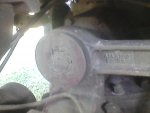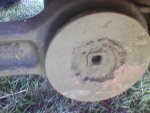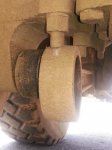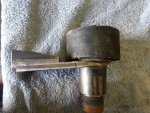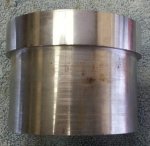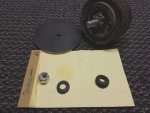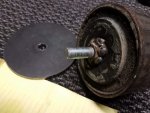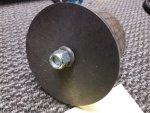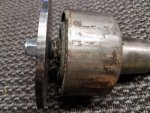TCD
Member
- 119
- 7
- 18
- Location
- Mound.House, NV
Howdy,
Today while slowly rolling down a hill the back of my M923 kicked hard to the right when I applied the brakes (gently) and there was a non-standard clank/clunk. When I climbed down to take a look I found the the first rear axle right tire almost touching the second rear axle right side tire. The front right side Torque Rod had come loose (the rubber was out of the ring and the Torque Rod was separated from the mount).
So after a little searching on Steel Soldiers I ordered a set of the heavy duty ball joint replacement parts ("Torque Rod End For 5 Ton Trucks M54 / M809 / M939, Heavy Duty Style, 7979185HD") from http://www.eriksmilitarysurplus.com/torodendfor51.html and they are on the way (Thanks Eric!).
Is "TM 9-2320-211-34-2-3" appropriate for the M923 as it is not listed in the preamble (it lists "5-TON, 6X6, M39 SERIES TRUCKS (MULTIFUEL")? If not I have been unable to find the correct TM relating to the process of removing and reinstalling the rebuilt Torque Rod (honest I have tried!). I also need to understand how to best move the front axle back into the correct alignment so I can reattach the rebuilt Torque Rod.
Can someone direct me to the correct TM that will cover this project?
My second question is could I have damaged anything else that I need to inspect during the repair process?
When I pulled off the road the axle actually came back partially into alignment. There does not appear to be any other damage to any other part of the drive line when I crawl under the truck.
The truck is about five days old to me however I am not concerned about this problem as long as I can completely address the repair. Fortunately I have access to everything that may be required to rebuild the Torque Rod. I have also review the following links (and many others tonight):
http://www.steelsoldiers.com/archive/index.php/t-112310.html
http://www.steelsoldiers.com/showthread.php?75224-Pressing-Torque-Rod-Ends-In-Out
Also I thought about this today and I'm wondering if there is any reason NOT to do some version of this mod?
http://www.steelsoldiers.com/showthread.php?33684-Torque-rod-dogbone-mod-and-removal
All thoughts, comments and opinions Greatly Appreciated!
Thanks,
Tom
Today while slowly rolling down a hill the back of my M923 kicked hard to the right when I applied the brakes (gently) and there was a non-standard clank/clunk. When I climbed down to take a look I found the the first rear axle right tire almost touching the second rear axle right side tire. The front right side Torque Rod had come loose (the rubber was out of the ring and the Torque Rod was separated from the mount).
So after a little searching on Steel Soldiers I ordered a set of the heavy duty ball joint replacement parts ("Torque Rod End For 5 Ton Trucks M54 / M809 / M939, Heavy Duty Style, 7979185HD") from http://www.eriksmilitarysurplus.com/torodendfor51.html and they are on the way (Thanks Eric!).
Is "TM 9-2320-211-34-2-3" appropriate for the M923 as it is not listed in the preamble (it lists "5-TON, 6X6, M39 SERIES TRUCKS (MULTIFUEL")? If not I have been unable to find the correct TM relating to the process of removing and reinstalling the rebuilt Torque Rod (honest I have tried!). I also need to understand how to best move the front axle back into the correct alignment so I can reattach the rebuilt Torque Rod.
Can someone direct me to the correct TM that will cover this project?
My second question is could I have damaged anything else that I need to inspect during the repair process?
When I pulled off the road the axle actually came back partially into alignment. There does not appear to be any other damage to any other part of the drive line when I crawl under the truck.
The truck is about five days old to me however I am not concerned about this problem as long as I can completely address the repair. Fortunately I have access to everything that may be required to rebuild the Torque Rod. I have also review the following links (and many others tonight):
http://www.steelsoldiers.com/archive/index.php/t-112310.html
http://www.steelsoldiers.com/showthread.php?75224-Pressing-Torque-Rod-Ends-In-Out
Also I thought about this today and I'm wondering if there is any reason NOT to do some version of this mod?
http://www.steelsoldiers.com/showthread.php?33684-Torque-rod-dogbone-mod-and-removal
All thoughts, comments and opinions Greatly Appreciated!
Thanks,
Tom




